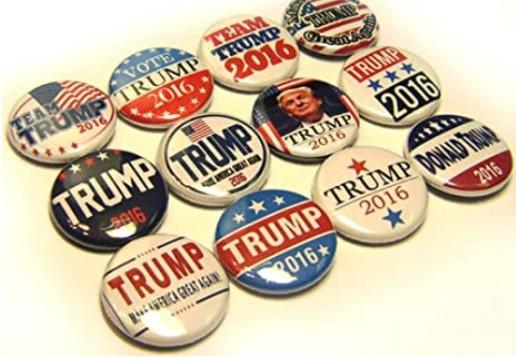Throughout history political badges have been used to show support for candidates during elections. These small pieces of memorabilia can be made from a variety of materials, including metals, cloth, and plastic. Some are quite rare and valuable, while others are more common. In this blog post, we will take a look at 10 different political pins and buttons from around the world. We will discuss the history behind each one and why they are significant.
At Sienna Pacific we offer all kind of Custom Lapel Pins, as political pins or election pins, in Hard and Soft Enamel, Screen Printed, Photo Etched or Cloissoné…. We also manufacture and supply badge patches for the police, law enforcement, military or any kind of logo patch for companies and individuals. We do not sell nor commercialize any of the products listed below but we can always manufacture similar designs and even with antique finishing touch or sandblasted.
- 10 Political badges and their historic context
- 1. 1789 George Washington's presidency inaugural buttons
- 2. 1860 Abraham Lincoln Presidential Campaign political ferrotype or tintype badge
- 3. 1896 "No Cross of Gold, no crown of thorns" political campaign pin
- 4. 1904 Theodore Roosevelt Campaign Buttons
- 5. 1960 JF Kennedy campaign political badges
- 6. 1966 to 1971 Chairman Mao Badges – Cultural revolution:
- 7. Soviet Era Political Pins. URSS Pioneer pin with profile of Lenin. Property of the Harvard Kennedy School Library & Knowledge Services, Harvard University:
- 8. Hippie Patches, Punk Patches, biker Patches are another kind of political badges from the 60s and 70s:
- 9. 2008 "Yes We Can" Obama U.S. Presidential Election Campaign Buttons
- 10. Donald Trump 2016 Presidential Campaign Buttons
10 Political badges and their historic context
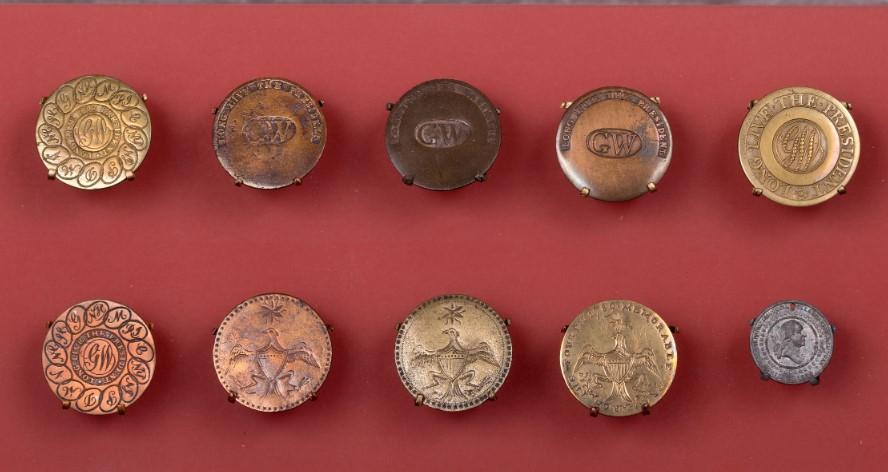
1. 1789 George Washington’s presidency inaugural buttons
These buttons were made to inaugurate George Washington’s presidency. They are made of copper and have the phrase “Long Live the President” and the initials GW.
George Washington’s 1789 campaign motto, “Long Live the President,” may seem ironic at first glance. After all, this phrase typically references the monarchy in Europe, and the United States was just starting its journey as a democratic nation. However, a deeper dive into history reveals that the use of such a slogan was actually quite fitting for the time. The American Revolution had only just concluded, and much of Europe remained skeptical about the success of this new republic. Washington’s campaign worked to reassure both American citizens and foreign rulers that democracy could prevail, and what better way to do so than to adapt traditional phrases of monarchic loyalty and apply them to the presidency? In essence, “Long Live the President” served as a proclamation of faith in the stability and longevity of America’s experiment with self-government.
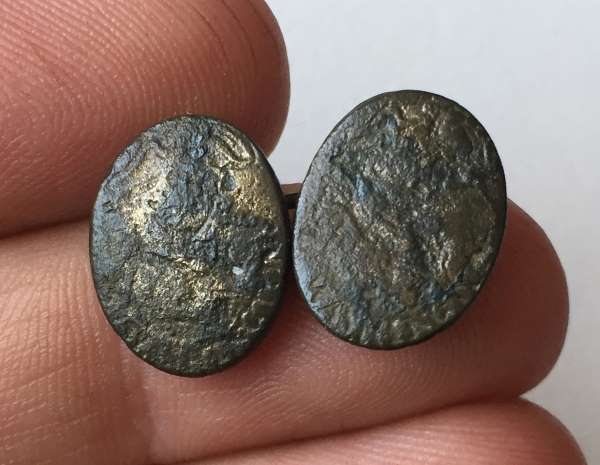
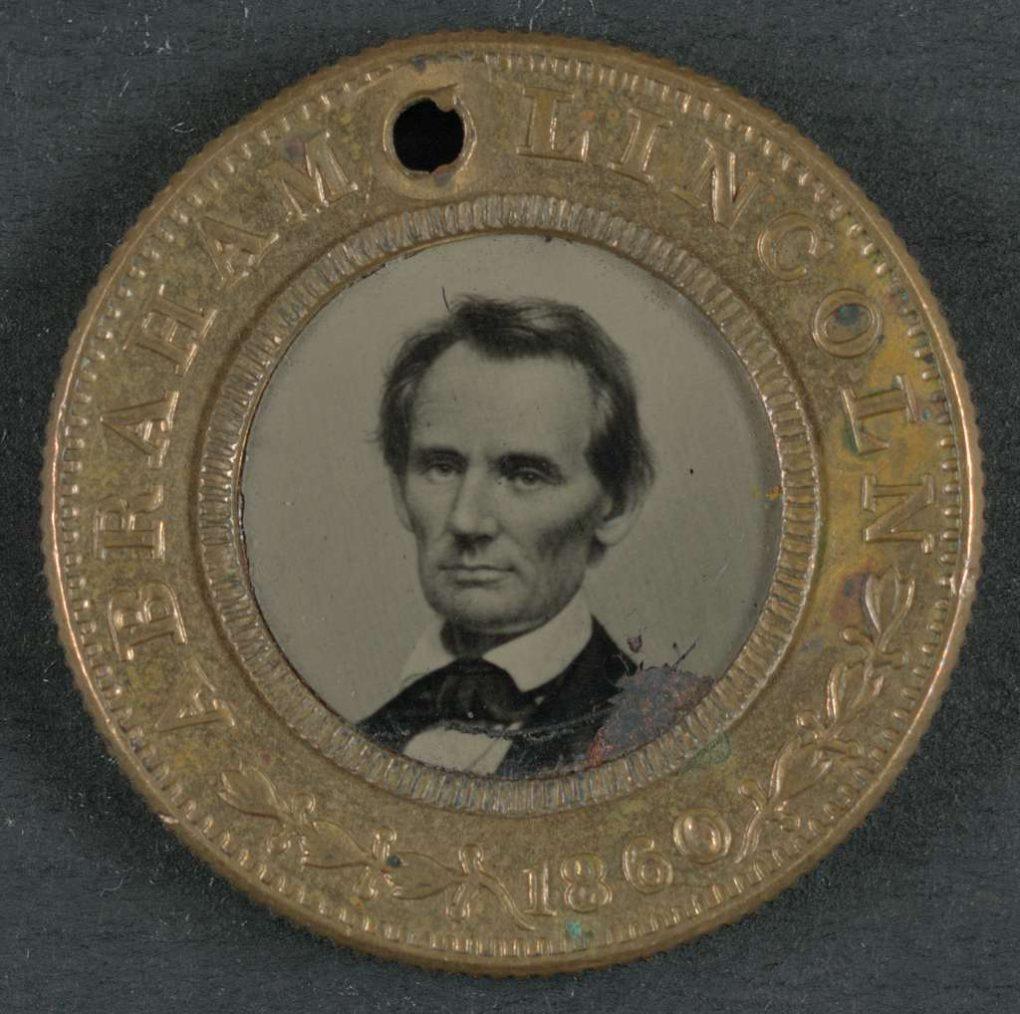
2. 1860 Abraham Lincoln Presidential Campaign political ferrotype or tintype badge
In some places it is referred to as a badge but according to some other sources it is a medallion. However, it is considered one of the predecessors of the political pins and buttons.
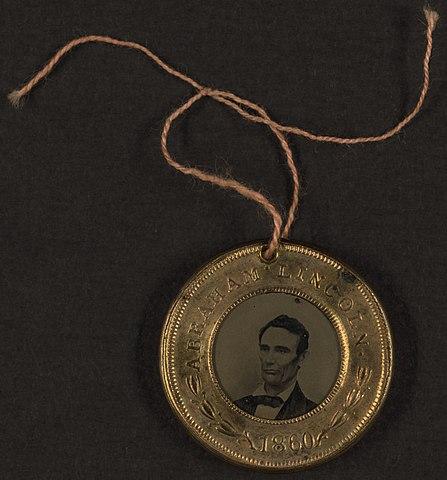
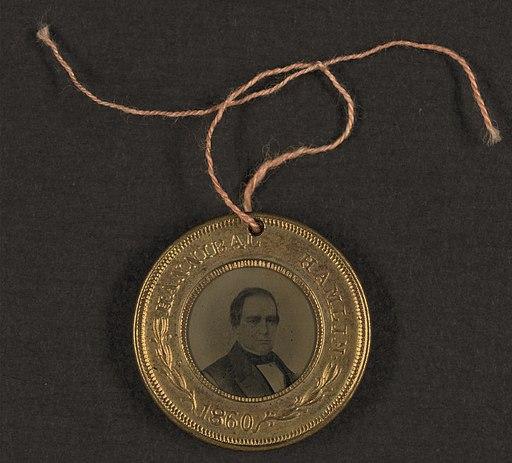
In the 1860 Presidential election, political badges were a common way for voters to show their support for a particular candidate. One such badge, depicting Abraham Lincoln, was made using a ferrotype or tintype process. This process involved capturing a photographic image onto a thin sheet of iron or tin. Today, these badges serve as interesting historical artifacts, offering insight into the political climate of the time and the individuals who wore them proudly in support of their preferred candidate.
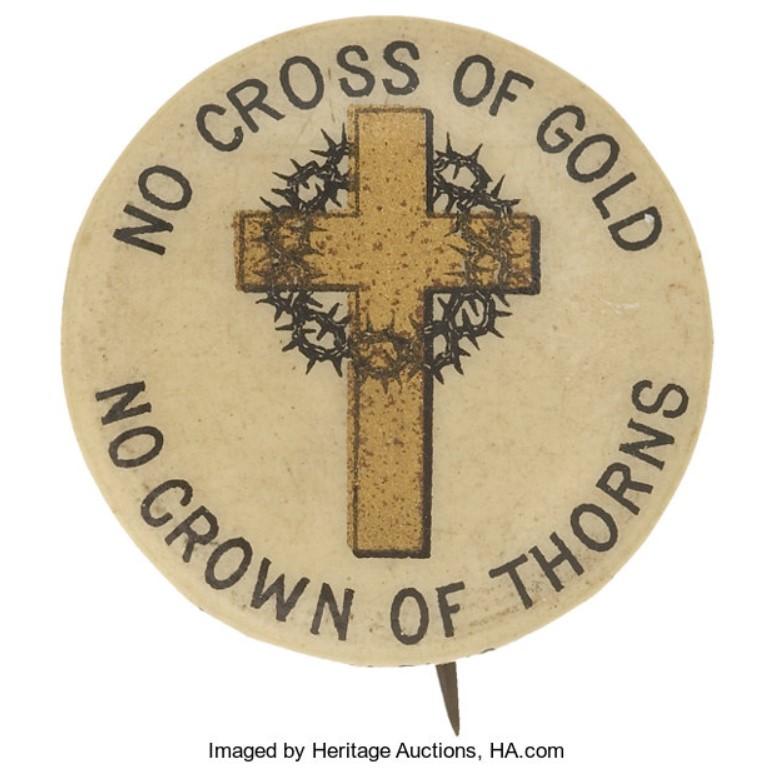
3. 1896 “No Cross of Gold, no crown of thorns” political campaign pin
Among the top historic political badges we have to mention this simple but powerful one. This pin refers to William Jennings Bryan’s famous 1896 speech. The mass production of political pins starts this year, thanks to a new industrial production process patented by Whitehead & Hoag.
The phrase “No cross of gold, no crown of thorns” was popularized by William Jennings Bryan during the 1896 presidential election. The cross and crown symbolized the conflict between the interests of those in the gold industry, represented by a gold cross, and farmers and laborers, represented by a crown of thorns.
This conflict revolved around monetary policy and the use of either gold or silver as a form of currency. Bryan, who supported the use of silver to improve economic conditions for farmers and laborers, famously proclaimed at the Democratic National Convention that he did not want a “cross of gold” imposed upon them. In other words, he did not want the power and interests of the wealthy gold industry to continue dominating over those in farming and labor industries. Ultimately, Bryan lost the election to William McKinley but his famous phrase remains an iconic rallying cry for economic equality.
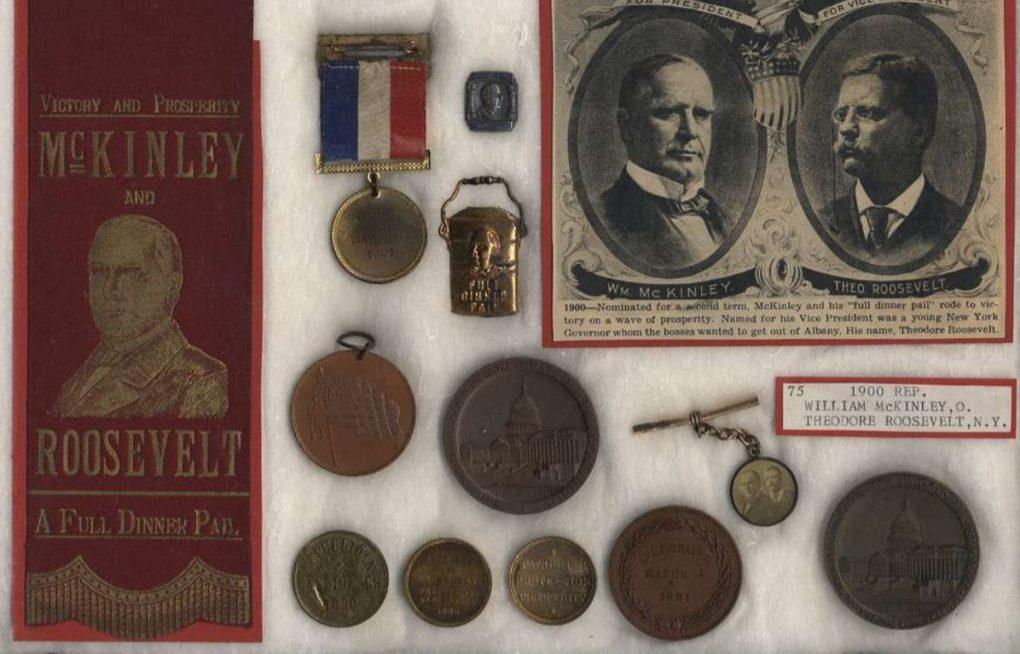
4. 1904 Theodore Roosevelt Campaign Buttons
These political badges were used during Theodore Roosevelt’s presidential campaign.
The 1904 presidential election saw Theodore Roosevelt, the Republican incumbent, running for his second term in office. Building on his successful first term, Roosevelt campaigned on a platform of continued progress and expansion. He promised to maintain the strong economy and urge Congress to pass important legislation such as the Pure Food and Drug Act. His campaign also focused on expanding American influence abroad, advocating for a more assertive foreign policy and even suggesting the building of a Panama Canal. Roosevelt’s campaign was ultimately successful, as he won by a landslide with over 60% of the popular vote. His decisive victory cemented him as a popular and influential president in American history.
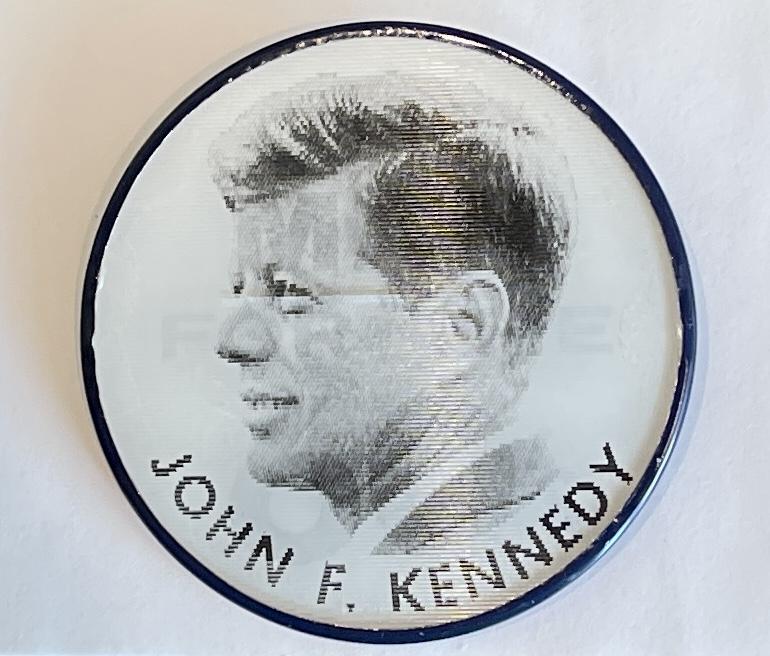
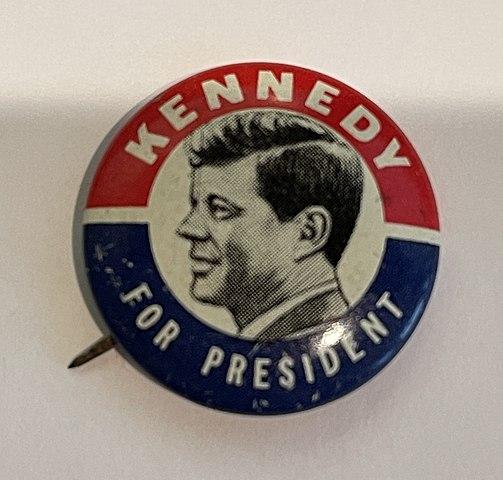
5. 1960 JF Kennedy campaign political badges
This button was used during John F. Kennedy’s presidential campaign.
The 1960 presidential campaign of John F. Kennedy was marked by numerous challenges, including his relative youth and inexperience, his Roman Catholic faith, and allegations of financial misconduct. However, Kennedy was able to effectively use television as a medium to present himself as confident, articulate, and charismatic. His famous televised debates with opponent Richard Nixon showcased his quick thinking and ability to connect with the American people. Additionally, Kennedy’s team utilized innovative campaign tactics such as featuring the handsome Kennedy family in advertisements and distributing buttons with Kennedy’s catchy campaign slogan “Kennedy for President – The New Frontier.”
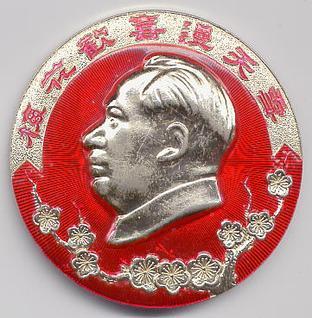
6. 1966 to 1971 Chairman Mao Badges – Cultural revolution:
These political badges were given out during the Chinese Cultural Revolution. They feature a portrait of Chairman Mao Zedong in several different designs.
During China’s Cultural Revolution, Chairman Mao badges were worn as a symbol of loyalty and devotion to communist leader Mao Zedong. These small pins featured the iconic portrait of Mao, often with phrases like “Long Live Chairman Mao” or “Serve the People.” They were mandatory for all government officials and highly encouraged for citizens, with many wearing multiple badges at once to demonstrate their fervor. Even children as young as three or four years old wore them on their school uniforms. The badges reached peak popularity in the late 1960s, with an estimated nine billion produced during this time. Despite their initial widespread acceptance, the Cultural Revolution ultimately proved to be a destructive and tumultuous period in Chinese history, leading many to question the intense idolization of Mao symbolized by these ubiquitous badges. Today, they are often collected as historical artifacts from this turbulent era in Chinese history.
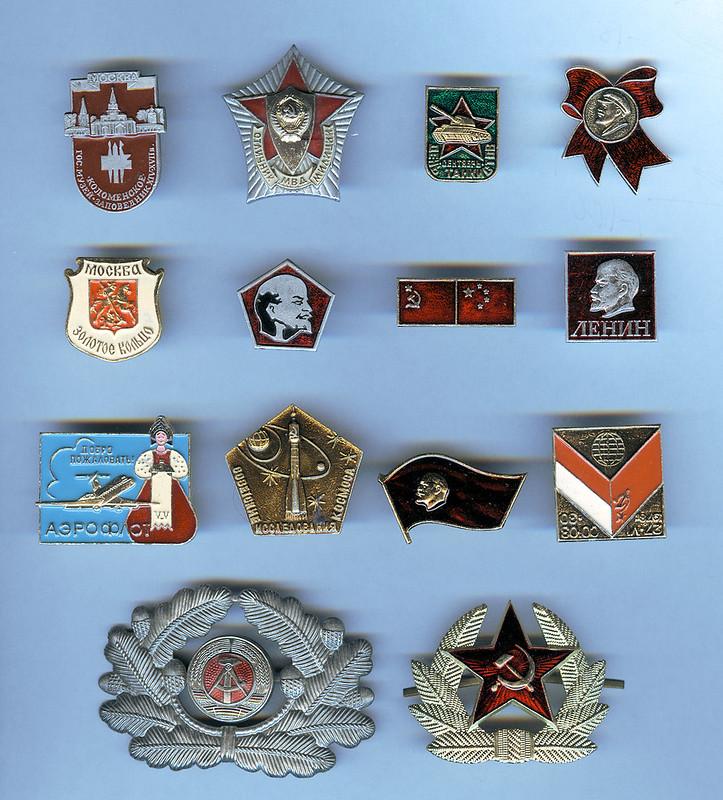
7. Soviet Era Political Pins. URSS Pioneer pin with profile of Lenin. Property of the Harvard Kennedy School Library & Knowledge Services, Harvard University:
This pin belonged to a member of the Young Pioneer Organization, a communist youth group in the Soviet Union. It features a profile of Vladimir Lenin.
The Soviet Union’s political pins were a way for individuals to publicly display their allegiance to the state, as well as their commitment to specific political parties or figures. This particular pin features a profile of Vladimir Lenin, founder of the Russian Communist Party and first leader of the Soviet Union. Possessing and wearing such a pin would have been seen as a demonstration of loyalty to the ideals and policies of Lenin and the Communist Party. These pins were often worn on clothing or attached to bags and other personal items, serving both as identification and propaganda tool for the Communist state. It serves as a physical reminder of life under Soviet rule, where individual expression was heavily controlled and party loyalty was prized above all else. Today, these pins serve as historical artifacts, providing insight into life in the Soviet Union during its time in power.
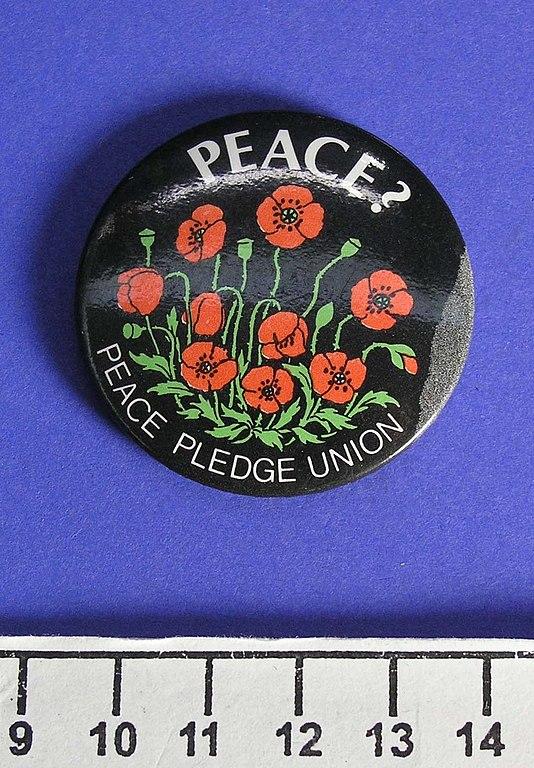
8. Hippie Patches, Punk Patches, biker Patches are another kind of political badges from the 60s and 70s:
These patches were popular among hippies, punks, and bikers in the 1960s and 1970s. They featured a variety of designs, including peace symbols, skulls, and flowers.
In the 1960s and 70s, many countercultural movements sought ways to express themselves and differentiate themselves from mainstream society. One form of self expression was through clothing, including wearing embroidered patches. Hippie patches often featured flowers, peace symbols, and messages advocating for love and unity. Punk patches frequently displayed anti-establishment themes and aggressive graphics.
Biker patches were worn by motorcycle gangs as symbols of membership and rank within the group. These patches continue to be popular among individuals looking to reflect their personal values and interests through fashion choices. While some may dismiss them as mere accessories, these patches hold deep significance for those who choose to wear them. In a world where individuality can sometimes feel lost in conformity, wearing patches is one way for people to assert their unique identities.
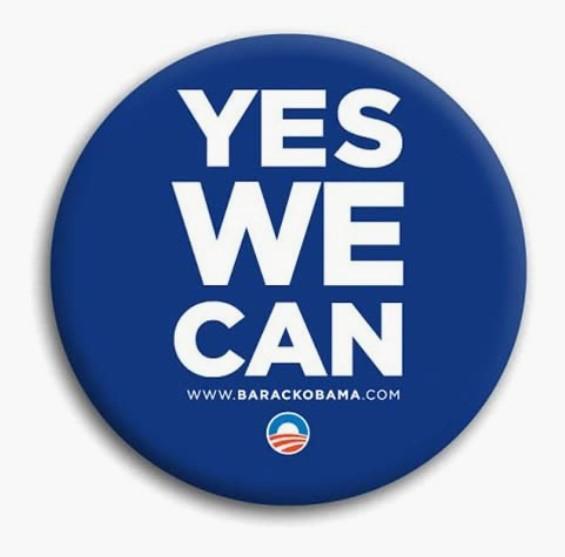
9. 2008 “Yes We Can” Obama U.S. Presidential Election Campaign Buttons
These buttons were used during Barack Obama’s presidential campaign. They feature the slogan “Yes We Can.”
In 2008, Barack Obama’s “Yes We Can” campaign slogan inspired millions of Americans to rally behind his presidential candidacy. The phrase tapped into the country’s collective desire for change, rallying diverse communities to come together and strive for a better future. During the campaign, Obama utilized various media platforms such as social media, television ads, and public appearances to spread his message and connect with voters. Despite facing steep odds against a well-established political opponent, Obama ultimately won the election and became the first African American president in U.S. history. The “Yes We Can” campaign will forever be remembered as a defining moment in American politics and a symbol of hope for those who seek equal opportunities in this country.
10. Donald Trump 2016 Presidential Campaign Buttons
These buttons were used during Donald Trump’s presidential campaign. They feature the slogans “Make America Great Again” and “Trump 2016.”
The 2016 presidential election was filled with historic moments, and collectors have taken note. The Donald Trump campaign buttons from that year have become hot collectibles, with new listings popping up on eBay every day. These buttons feature the now-iconic slogans “Make America Great Again” and “Trump 2016.” Whether you supported Trump’s campaign or not, these buttons provide a glimpse into one of the most talked about elections in modern history.
While they may be nostalgic reminders of a landmark election for some, others see political badges as evidence of different times in human history, and how big movements, revolutionary ideas and leaders made use of them as a way of encoraging loyalty among their followers and spread their messages. Whatever the case, these buttons stand as part of history and make a notable addition to any political memorabilia collection.
The tradition of wearing or giving away patches to support political candidates continues in the 21st century. So, if you see a political pin or button that you like, make sure to pick it up! It might just be a valuable piece of history.
